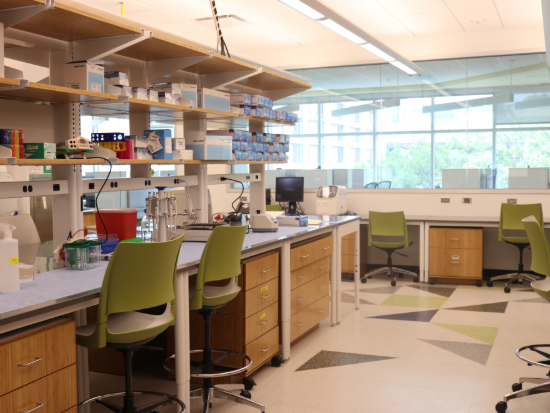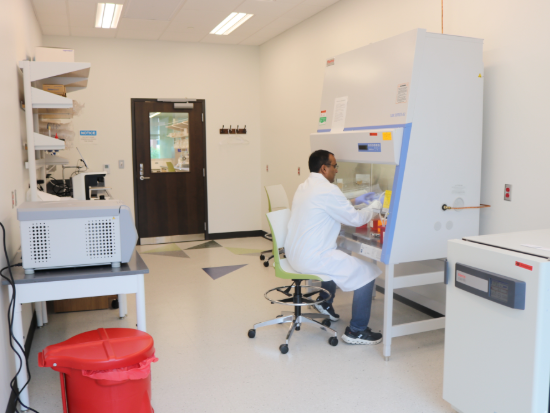 Researchers in the UAB Department of Otolaryngology recently occupied a new, 3,400-square-foot lab space in the newly renovated McCallum Basic Health Science Building. Renovations to the McCallum Building involved revitalizing the historic building, creating more modern and collaborative research spaces, with floors three through nine dedicated to departments in the Heersink School of Medicine. Renovations were officially completed in spring 2025.
Researchers in the UAB Department of Otolaryngology recently occupied a new, 3,400-square-foot lab space in the newly renovated McCallum Basic Health Science Building. Renovations to the McCallum Building involved revitalizing the historic building, creating more modern and collaborative research spaces, with floors three through nine dedicated to departments in the Heersink School of Medicine. Renovations were officially completed in spring 2025.
The lab of Justin Turner, M.D., Ph.D., professor and John S. Odess Endowed Chair in the Department of Otolaryngology, moved to the fourth floor of the McCallum Basic Health Science Building in October 2024. The lab leads a translational research program focused on chronic rhinosinusitis (CRS), with a particular emphasis on immune dysregulation and olfactory dysfunction.
CRS affects millions worldwide and remains a major cause of olfactory loss, particularly in older adults. The goal is to determine what causes CRS on a cellular and immune system level, with a particular focus on how the immune system changes with age.
 “Our work integrates immunology, molecular biology, and advanced transcriptomic and bioinformatics analyses to study the cellular and molecular mechanisms underlying CRS, especially in the context of aging,” said Sandeep Goswami, Ph.D., scientist in the Turner Lab. “We investigate innate immune responses, inflammasome signaling, and interleukin-mediated pathways that contribute to persistent inflammation and sensory loss in the upper airway.”
“Our work integrates immunology, molecular biology, and advanced transcriptomic and bioinformatics analyses to study the cellular and molecular mechanisms underlying CRS, especially in the context of aging,” said Sandeep Goswami, Ph.D., scientist in the Turner Lab. “We investigate innate immune responses, inflammasome signaling, and interleukin-mediated pathways that contribute to persistent inflammation and sensory loss in the upper airway.”
In analyzing this detailed genetic data and in turn uncovering specific immune system patterns linked to CRS, the goal is to help doctors offer more individualized treatments for CRS.
“Despite its prevalence, the disease remains poorly understood, with limited therapeutic options that address its underlying immune pathology,” Goswami said. “Our research fills a critical gap by focusing on how dysfunctional immune responses, particularly in aging, drive disease progression. By elucidating these mechanisms, our work has the potential to inform the development of precision medicine approaches that improve outcomes and quality of life for patients with chronic airway inflammation and sensory impairment.”